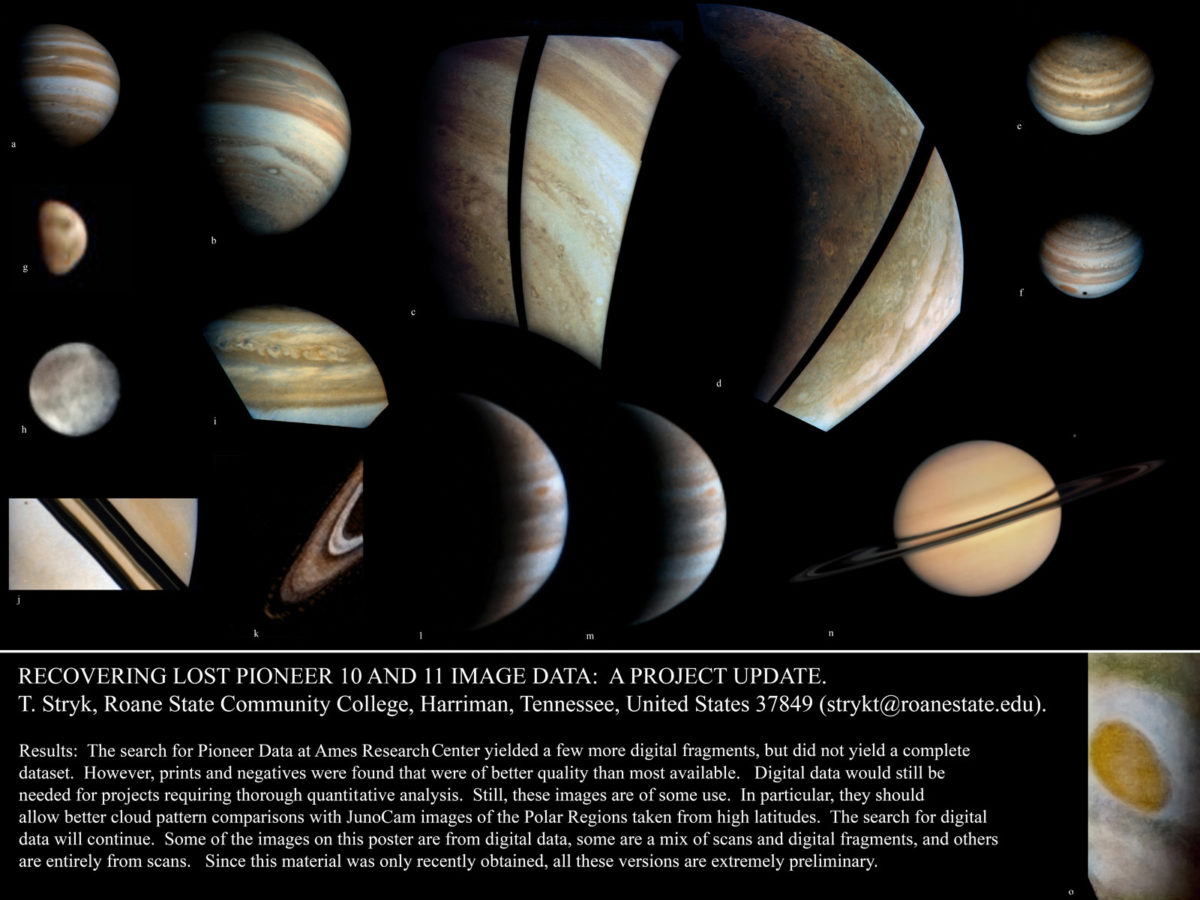Emily Lakdawalla • Mar 11, 2011
LPSC 2011: Wanted: Pioneer 10 & 11 digital data
This is both a Lunar and Planetary Science Conference (LPSC) update and a public service announcement. Ted Stryk posted a blog entry yesterday summarizing the work that he presented at the LPSC poster session on Tuesday, March 8. He's been working for years to locate the original Pioneer 10 and 11 image data from the Jupiter and Saturn encounters. He doesn't mean photos that were produced from the data, which are more widely available; he means numerical data, which, for Pioneer, would most likely be in the form of a matrix of numbers printed out on some yellowed paper sitting in some institution's library or some scientist's personal files.

Before LPSC, Ted visited the library at NASA Ames Research Center in the hopes of finding some of these missing digital data. He didn't find the treasure trove of digital data that he was hoping to. But he did find some higher-quality photos and a few bits and pieces of digital data. His poster includes some of this material in combination with some previous work. The caption below indicates how many of these images were made from digital rather than scanned photo data, which is not many!

Each image is designated by a letter. Here is a guide to the images based on those letters
A. P11 image C5 (Jupiter) Scans
B. P11 image C7 (Jupiter) Scans
C. P11 images C1 and C2 (Jupiter) Scans
D. P11 images D1 and C2 (Jupiter) Scans
E. P11 image D16 (Jupiter) Scans
F. P11 image D19 (Jupiter) Scans
G. P11 image D7 (Io) Digital.
H. P10 image A24 (Ganymede) Digital.
I. P11 image D3 (Jupiter) Scans
J. P11 image F7 (Mimas transiting Saturn) Scans
K. P11 image F12 (Saturnian Rings) Digital.
L. P10 image B38 (Jupiter with "Little Red Spot") Scans
M. P10 image B39 (Jupiter with "Little Red Spot") Scans
N. P11 mosaic using data from images F33, F19, and F12-F5 (Saturn) Mix of digital data and scans.
O. P10 image A2 (Jupiter -- Great Red Spot) ScanCredit: Scanned material and raw data courtesy NASA/Ames Research Center. Processed images: Ted Stryk
Coincidentally, this week another amateur, Ricardo Nunes, pointed from unmannedspaceflight.com to a website he's put together summarizing the Pioneer mission imaging of Jupiter and Saturn, including the best versions of images that he could find and process. It's a very thorough summary.
Let’s Go Beyond The Horizon
Every success in space exploration is the result of the community of space enthusiasts, like you, who believe it is important. You can help usher in the next great era of space exploration with your gift today.
Donate Today

 Explore Worlds
Explore Worlds Find Life
Find Life Defend Earth
Defend Earth

